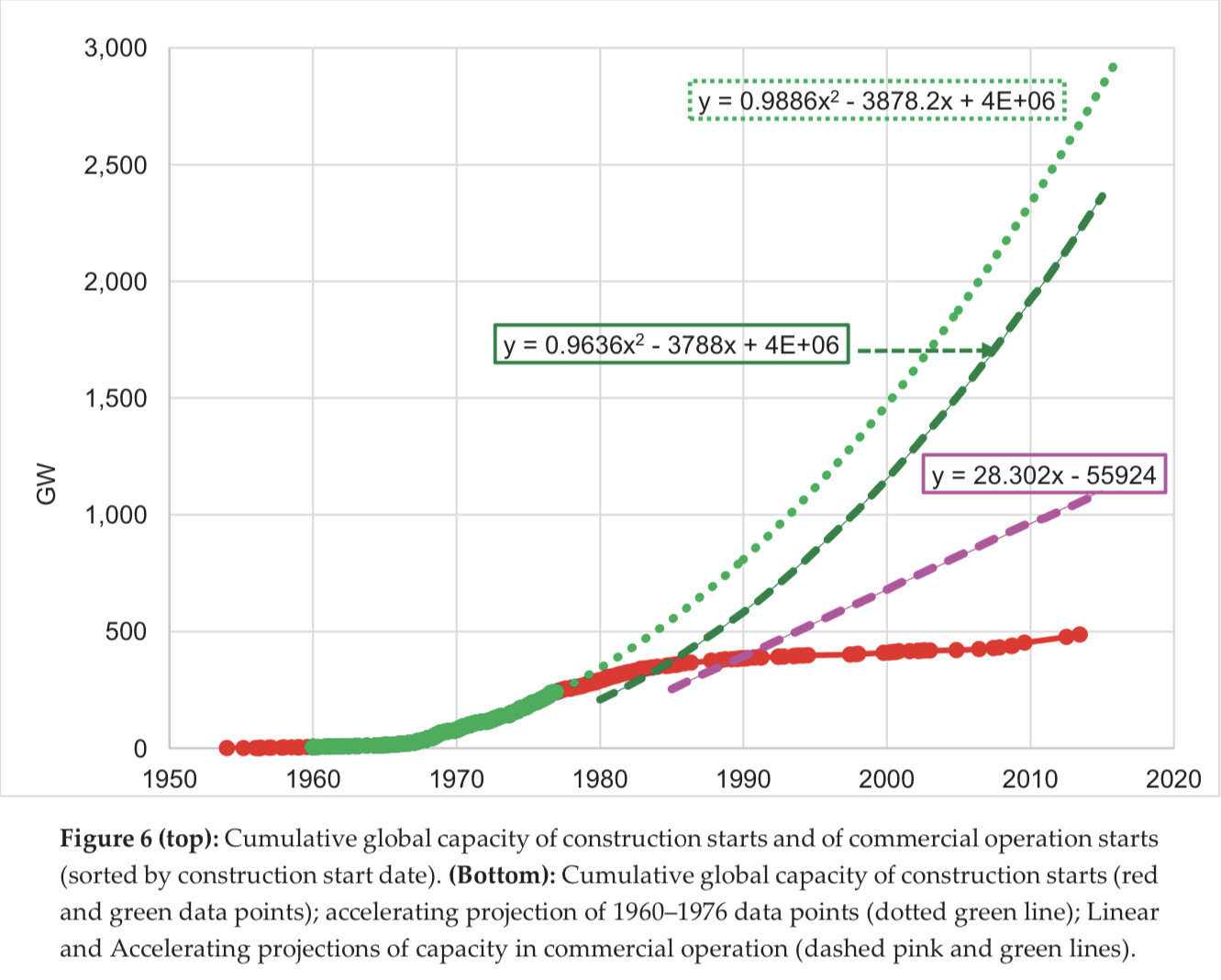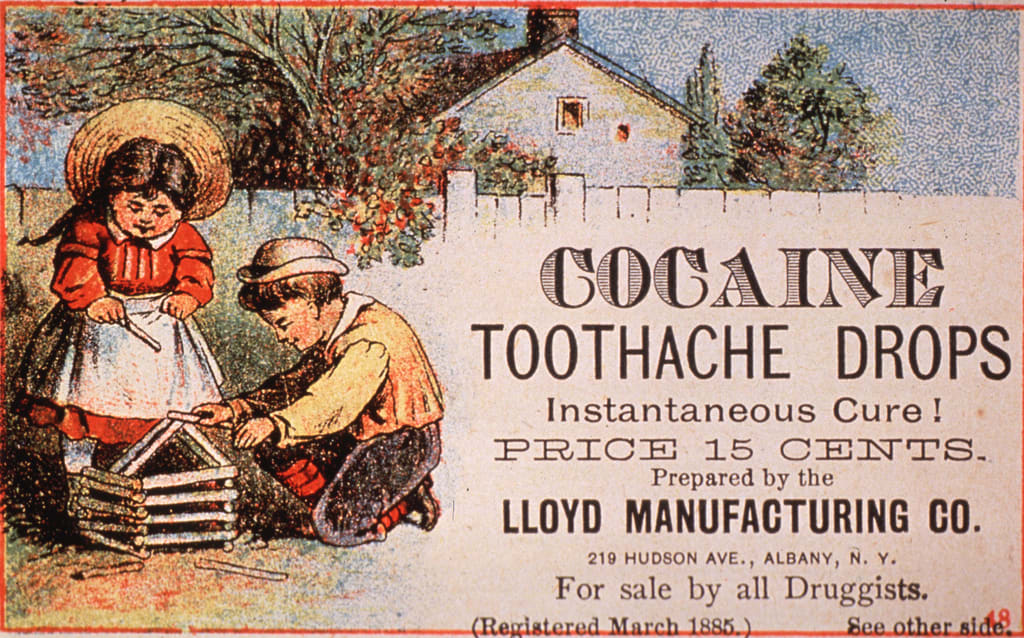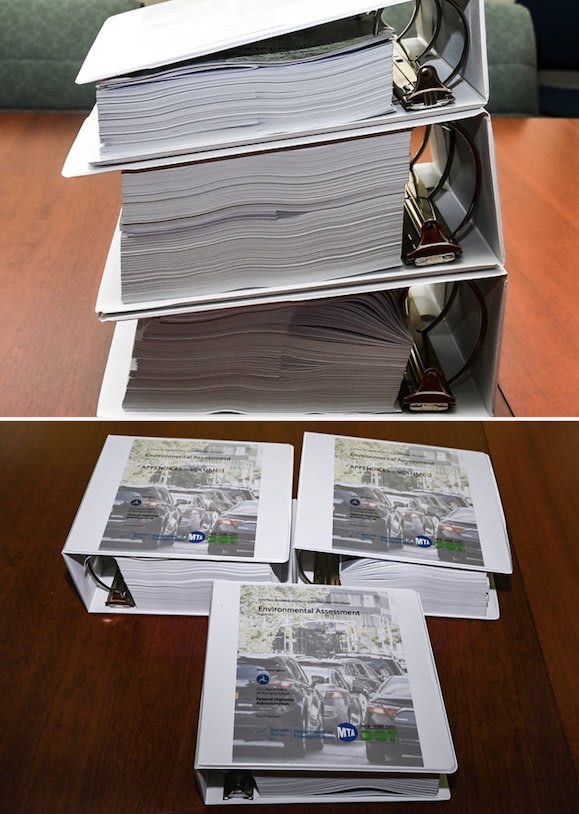Who regulates the regulators? We need to go beyond the review-and-approval paradigm
26Dumbledore's Army
5MondSemmel
1lemonhope
16DirectedEvolution
7Gunnar_Zarncke
5mako yass
4ChristianKl
1mako yass
5ChristianKl
1mako yass
2ChristianKl
2jasoncrawford
1mako yass
4M. Y. Zuo
2MondSemmel
1M. Y. Zuo
2MondSemmel
1M. Y. Zuo
1lemonhope
3lemonhope
3Roman Leventov
2Sable
2ChristianKl
3jasoncrawford
3ChristianKl
2Thomas Sepulchre
11jasoncrawford
3Thomas Sepulchre
-9Auruby
New Comment
One more question for your list: what industries have not been subject to this regulatory ratchet and why not?
I‘m thinking of insecure software, although others may be able to come up with more examples. Right now software vendors have no real incentive to ship secure code. If someone sells a connected fridge which any thirteen-year-old can recruit into their botnet, there’s no consequence for the vendor. If Microsoft ships code with bugs and Windows gets hacked worldwide, all that they suffer is embarrassment[1]. And this situation has stayed stable since the invention of software. Even after high-publicity bugs like Heartbleed or NotPetya, the industry hasn’t suffered the usual regulatory response of ’something must be done, this is something so we’re going to do it’.
You don’t have to start with a pre-approval model. You could write a law requiring all software to be ‘reasonably secure’, and create a 1906-FDA type policing agency that would punish insecure software after the fact. This seems like the first step of the regulatory ratchet, it would be feasible, but no one (in any country?) has done it and I don’t know why.
We’ve also had demonstrations in principle of the ability to hack highly-regulated objects like medical devices and autos, but still no ratchet even in regulated domains and I don’t understand why not.
My best explanation for this non-regulation is that nothing bad enough has happened. We haven’t had any high-profile safety incidents where someone has died, and that is what starts the ratchet. But we have had high-profile hacks, and at least one has taken down hospitals and killed someone in a fairly direct way, and I don’t even remember any journalists pushing for regulation. I notice that I’m confused.
Software is an example of an industry where the first step of the ratchet never happened. Are there any industries which got a first step like a policing-agency and then didn’t ratchet from there even after high-publicity disasters? Can we learn how to prevent or interrupt the regulatory ratchet?
[1] Bruce Schneier has been pushing a liability model as a possible solution for at least ten years, but nothing has changed.
Health inspections can get crazy at restaurants too. My partner worked in the industry and is full of stories about this. Cupcakes with butter in the frosting being required to be kept in the refrigerator until sold. It being illegal to prep food in a food cart, then transfer it to a food truck for catering, despite such transfers being legal when the food is cooked in a restaurant. It being impossible to certify storage units to keep extra ingredients. Requirements that food carts have clean water tanks attached even when they are directly hooked up to clean city water. Requirements to track how long food has been hot held despite this making no real difference for food safety.
In most cases, workers deal with this by lying to or withholding information from inspectors.
As I wrote in a comment on From Oversight To Overkill:
There is no problem you can't solve with another level of indirection. So the obvious solution: Regulate the regulators. Make the regulators prove that a regulation they make or enforce is not killing more people than it saves.
Though, alas, I don't think we will see that or that it would be feasible.
I like the idea of using insurance, but note that the way insurance usually works is that now the insurer is forcing you to manage risks and establish "reasonable" procedures. The up-side is that the insurer hopefully has a better understanding of what things need to be improved (what is actually reasonable) and which do not and that there is competition between insurers. But it can take some time.
Do futarchies (regulatory processes driven by prediction markets) have a role to play here? I think they probably do. Approver's incentives (usually, their job security) aren't currently controlled in proportion to the outcomes of their decisions, the institution disproportionately pays too much attention to downside and not enough to upside, right?
To make people weigh risks in proportion to the potential upside, you may need to make a person's incentives and degree of influence accountable to something like a market.
(I've designed a bit in this area. Venture Granters. I wont attempt to adapt this one to drug regulation, not my domain. I feel it can be done, but it's going to need a lot more moving parts and it's going to have to be led more by projections than end results, because the end results of drug approvals often take a long time to manifest, and are large and irreversible.)
Insurance contracts are regulatory processes driven by prediction markets. If you have liability plus required insurance then different insurance companies compete with regulations that you have to follow to be eligible for their insurance contracts and the insurance companies trade on various futures to manage their risks.
Yeah. So to paraphrase, you could have a system where you can release something but only if you can find someone who will sell you insurance, then if your drug gives people cancer on a 20 year time delay the insurer has to pay for the chemo, and more for the damages that can't be repaired.
How do these systems address the fact that companies and their human executives often just wont viscerally care about consequences that're 20 years away? Or that sometimes the downsides will be so adverse that one org wont really be able to weigh them in proportion to the upsides via monetary incentives? (you can't punish an org with anything worse than bankruptcy, but sometimes the downsides are so bad that you need to.) With venture granters I tried to think of ways of increasing accountability beyond what bankruptcy allows. One example is prison sentences for insurers who can't pay liabilities, regardless of whether their mistakes were malicious. Not sure why we don't have that already. Another is network structures between insurers: they can make agreements to share liabilities to increase their 'load rating', but now they're going to have formalized incentives to audit each other, which I've heard via development economist Mushtaq Khan ( https://80000hours.org/podcast/episodes/mushtaq-khan-institutional-economics/ ) is a great way to keep an industry straight and to get the industry to participate fruitfully in generating effective regulation.
Clarify "Compete with regulations"?
We don't have many problems with insurance companies going broke and not being able to pay out.
The bigger problem is that "Ask a jury of your peers whether or not the drug was responsible for the cancer" is a crappy way to determine causality.
Clarify "Compete with regulations"?
Different insurance companies have different policies about what the buyer of the insurance company has to do to be eligible for them. Those policies are regulations.
We don't have many problems with insurance companies going broke and not being able to pay out.
How do you know this? (I'd be surprised if this was true, unless it was a result of a) insurance companies' contracts maintaining a bottomless barrel of excuses to not provide the service they sold, which is very common b) a result of forgiveness and bailouts which should not have happened or c) it basically does happen, but the brand gets sold to new owners and most of the staff and facilities are kept and no one notices. In which case I wouldn't be surprised at all, but I'm still right, these are all very problematic phenomena.)
Different insurance companies have different policies about what the buyer of the insurance company has to do to be eligible for them. Those policies are regulations.
That makes sense, so the government sets some low-level requirements that're risky to take on, simple, and abstract, something like, idk, "you'll be destroyed if The Weighers find that your approvals produce more harm than good" or something, and the insurance company builds specific instructions on top of that like "nothing bad will happen to you as long as you do these specific things"?
How do you know this?
It's the sort of problem that's newsworthy. If we would have many problems like that, people would be angry about it.
the insurance company builds specific instructions on top of that like "nothing bad will happen to you as long as you do these specific things"?
Or at least the amount of bad that happens is manageable for the insurance company.
If you look at malpractice insurance, some insurance providers require Board certification of doctors or give those that have it better rates.
Insurance is exactly a mechanism that transforms high-variance penalties in the future into consistent penalties in the present: the more risky you are, the higher your premiums.
Then insurance as you've defined it is not a specific mechanism, it's a category of mechanisms, most of which don't do the thing they're supposed to do. I want to do mechanism design. I want to make a proposal specific enough to be carried out irl.
I’m not suggesting that that liability law is the solution to everything. I just want to point out that other models exist, and sometimes they have even worked.
I don't understand the line of logic here. Showing that other models exist and finding a few examples where they worked isn't a compelling reason.
To change would require that the new model works significantly more often, with all the same real world conditions as the status-quo model.
If their success rate is roughly the same, or even worse, then I can't see any reason to change.
To change would require that the new model works significantly more often, with all the same real world conditions as the status-quo model.
Isn't your position infinitely conservative? If you have to demonstrate the efficacy of an alternative to that standard before you're allowed to try the alternative, then you can't ever try any alternatives.
Or put differently, why demand more from the alternative than from the status quo? We could instead demand that the status quo (e.g. the FDA's ultra-slow drug approval process) justify itself, and when it can't (as per the post above), replace it with whatever seems like the best idea at the time.
Isn't your position infinitely conservative? If you have to demonstrate the efficacy of an alternative to that standard before you're allowed to try the alternative, then you can't ever try any alternatives.
Did you misread? I wasn't commenting at all on experimentation.
To change would require that the new model works significantly more often, with all the same real world conditions as the status-quo model.
I don't think I misread, but I'll admit I don't understand. My point was that the quoted requirement sounds like it would make it impossible to ever replace or reform an entrenched paradigm like the review-and-approval model, or an entrenched institution like the FDA.
Because the only way to fulfill the requirement is to demonstrate that someone has already found a better solution and been allowed to implement it, which this requirement would forbid. Even if you're allowed to experiment, the requirement sounds too stringent to ever admit experimental evidence as sufficient.
Even looking at the case of 'replacing' or 'reforming' the FDA entirely, thankfully there is more than one authority, or country, in the world? And no one has a monopoly over humankind?
I'm not really sure how to explain this better, but here's a try:
It's clearly possible for some organizational structure, better then the FDA circa 2023, to come into existence at some point in the future and demonstrate that with concrete evidence and so on.
Of course it's theoretically possible for a supermajority of folks in the US to keep on ignoring all of it, but if that happens too many times then the US will be outcompeted and cease to exist eventually. So there's a self-correction dynamic built in for humankind, even in the most extreme of scenarios.
I've thought about an approach to this I call meta-regulation: regulations on what kind of regulations can be passed.
One of my favorite ideas is to limit the number of total regulations a given agency can set (or perhaps the total wordcount of its regulations, just to punish any gaming of this meta-regulation) to half of whatever it currently is. That way, once regulations are reduced to their newly declared peak, whenever regulators want to add a new regulation, they are forced to get rid of an existing one.
Hence they will be forced to do some form of cost-benefit analysis on the regulations they keep.
If we would make drug manufacturers liable for all health effects that people who take the drugs experience after taking the drugs, nobody would sell any drugs.
For vaccines, we have laws that explicitly remove liability from the producers of vaccines, because we believe that dragging vaccine manufacturers before a jury of people without any scientific training does not lead to good outcomes.
The lyme vaccine passed regulatory approval but liability concerns took LYMErix from the market.
Making OpenAI liable for everything that their model does would make them radically reduce the usage of the model. It's a strong move to slow down AI progress. It might even be stronger than the effect that IRB's have on slowing down science in general.
Right, and as Tyler Cowen pointed out in the article I linked to, we don't hold the phone company liable if, e.g., criminals use the telephone to plan and execute a crime.
So even if/when liability is the (or part of the) solution, it's not simple/obvious how to apply it. Needs good, careful thinking each time of where the liability should exist under what circumstances, etc. This is why we need experts in the law thinking about these things.
I have the impression that your post asserts that there's a problem with review-and-approval paradigm is in some way more problematic than other paradigms of how to regulate. It seems to me unclear why that would be true.
Right, and as Tyler Cowen pointed out in the article I linked to, we don't hold the phone company liable if, e.g., criminals use the telephone to plan and execute a crime.
While it sounds absurd to talk about this, there are legal proposals to do that at least for some crimes. In the EU there's the idea that there should be machine learning run on devices to detect when the user engages in some crimes and alerts authorities.
Brazil discusses at the moment legal responsibility for social media companies who publish "fake news".
I think the Nuclear Regulatory Commission (NRC) furnishes a clear case of this. In the 1960s, nuclear power was on a growth trajectory to provide roughly 100% of today’s world electricity usage. Instead, it plateaued at about 10%. The proximal cause is that nuclear power plant construction became slow and expensive, which made nuclear energy expensive, which mostly priced it out of the market. The cause of those cost increases is controversial, but in my opinion, and that of many other commenters, it was primarily driven by a turbulent and rapidly escalating regulatory environment around the late ‘60s and early ‘70s.
I do not follow you here. The paper you link to (in page 14) compares the energy generated by fuel types in three scenarios: what actually happened, and two contrefactual scenarios regarding how nuclear could have grown, one "linear" and one "accelerating".
In the actual scenario, nuclear indeed plateaued at about 10%. But in the "linear", it only reaches 25%, and even in the "accelerating", it only reaches about 75% of total capacity.
Did you take the most favorable scenario, and make it look significantly shinier, for good measure?
Looking at the “accelerating projection of 1960–1976” data points here, it reaches almost 3 TW by the mid-2010s:

According to Our World in Data's energy data explorer, world electricity generation in 2021 was 27,812.74 TWh, which is 3.17 TW (using 1W = 8,766 Wh/year).
Comparing almost 3TW at about 2015 (just eyeballing the chart) to 3.17 TW in 2021, I say those are roughly equal. I did not make anything “significantly shinier”, or at least I did not intend to.
Curated and popular this week

